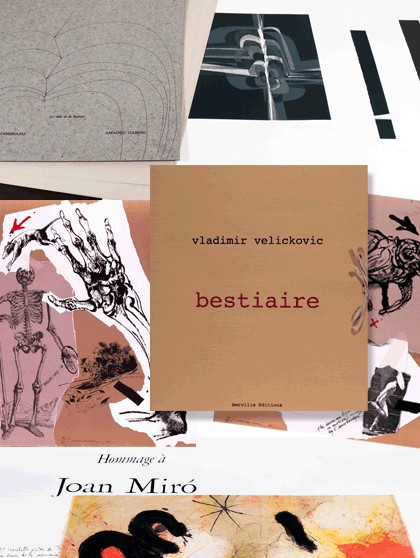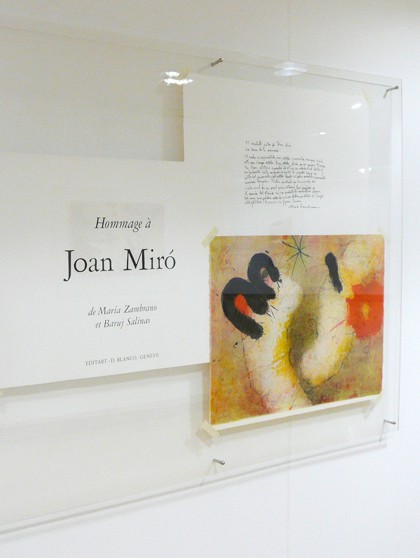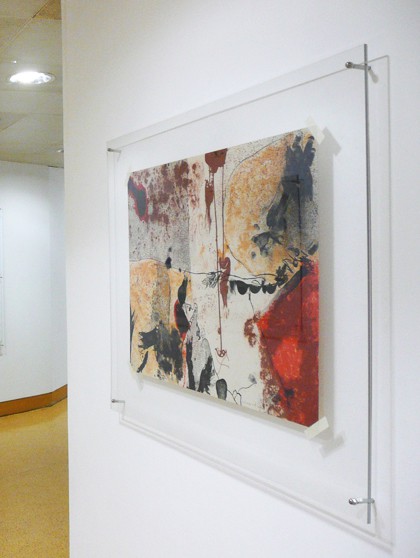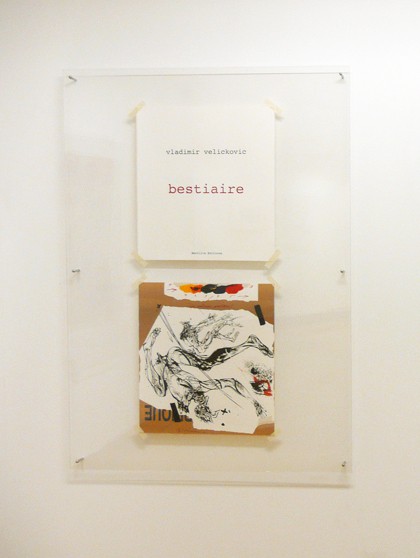



After the Concealment, the Images
At the Portuguese Screen Printing Center (Rua dos Industriais, 6 Lisboa) with the title: “After Concealment: The Images”, there is patent until On April 12th, an exhibition of two albums of graphic work in honor of María Zambrano and another in homage to Juan Miró, with a text by Zambrano and a lithograph by Baruj Salinas . Another album on display: “Bestiaires”, brings together seven lithographs by the Yugoslavian Vladimir Velickovic (b. 1935) accompanying the exhibition of this painter that takes place at Galeria António Prates in Lisbon and with an introduction by the French critic Michel Onfray, an edition of Ateliers Paris Litho Uzès, France, July, 2007. Velickovic, an architect by training gave classes at the School of Fine Arts in Paris (1983-2000), the city where he has lived and worked since 1966. Velickovic's tragic universe portrays in the current album the cruelty of a contemporary experience with his procession of metaphors of a devouring time, of suffering and fatality of destruction and death. Writes Michel Onfray: “Bestiary emblematic of the human who, himself, bites and disguises the harmful effects thanks to a fearsome technology.” The darkness and pessimism of Velickovic's aesthetics are contrasted with the clarity and ascending purity of the speech of the poet-philosopher María Zambrano (1904-1996) present in the album homage to the great Spanish painter Juan Miró (1893-1983). The album reproduces the aforementioned text alongside a lithograph by the Cuban artist (b. 1938), Baruj Salinas: explosion of a sun, initial and splendid metaphor radiating a thousand scintillations on a background of submerged light, a cradle of nascent calligraphies, written by the soul and the Cosmos in loving dialogue (edition by Editart, Genève, 1980). Baruj Salinas, painter and engraver, graduated in architecture and lived in Miami and later in Barcelona, returning in 1992 to Miami where he currently resides. In Barcelona he lived and worked with artists such as Tàpies, Miró and Calder. A personal friend of María Zambrano, he illustrated her texts on several occasions, with emphasis on the book “Antes de la Ocultacion: los Mares” and dedicated two exhibitions to him in 2004 (Miami): “Claros del Bosque” and in 2007 (Málaga): “La Mirada del que Mira”. Daedalus of writings on the fluid table of existence, its blue and pink pillars on the lilac of the memory of non-existence in homage this time to María Zambrano de Baruj Salinas in an album that brings together a We will highlight three fragments of the writing of the poet, born in Cuba, essayist and author of the famous novel “Paradiso” (1966) José Lezama Lima (1910-1976). Lezama Lima describes a loving friendship, the mysteries “the communion of beings in the invisible and the stellar”, the sacralization of memory, the point where the boundaries of life and death, a beginning before the beginning. Glorification of Being, hymn to existence illuminated by the halo of divine clarity. Center, privileged point of existence and thought, coincidence of the human and light in yet another tribute album, this time by the Spanish constructivist painter, sculptor and engraver Amadeo Gabino (1922-2004), the María Zambrano, with the title “El Vacío e la Belezza” which reproduces three texts in a bilingual version (Spanish/French, French translation by Marie Laffranque) from her book already published. translated between us “Claros del Bosque”: “El Centro y el Punto Privilegiado”, “El Vacío e la Belezza” and “La Visión, La Llama”. In a print run of 135 copies, from 1984 and 1985, a white center that imposes the fragility of its beauty on the surface shines through in the three engravings, watercolors by Amadeo Gabino. irradiation of shadows. Trembling, white fracture of the ancestral night. A hope for humanity in the words of the poet-philosopher and in the images that inspired her brilliant and sensitive speech. Maria João Fernandes